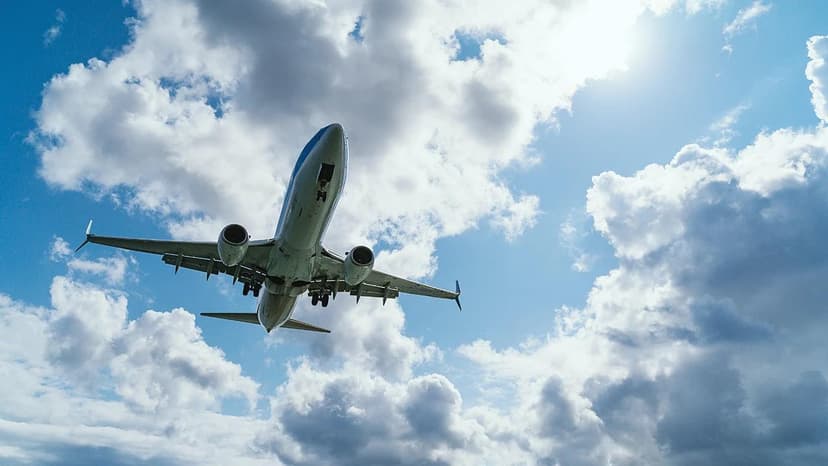TSA Carry-On Restrictions You Need to Know
Traveling by air can be a stressful experience, especially when it comes to what you can bring in your carry-on bag. The Transportation Security Administration (TSA) has specific rules, and it's crucial to follow them to ensure a smooth journey. This article will guide you through the important TSA carry-on restrictions so you can be prepared for your next trip.
What Are the TSA Liquid Rules?
The TSA has a famous rule for liquids called the 3-1-1 rule. It states:
- Each passenger can carry liquids, gels, and aerosols in travel-size containers that are 3.4 ounces (100 milliliters) or less per item.
- All these items must fit in a single, clear, quart-sized plastic bag.
- Each passenger is allowed only one such bag.
This means if you plan to bring shampoo, lotion, and other toiletries, you'll need to make sure they fit these criteria. If you have liquids in larger containers, consider packing them in your checked luggage.
Can You Carry Food?
Yes, you can carry food, but there are some restrictions. Solid food items like sandwiches, fruit, and packaged snacks are generally allowed. If you bring anything that could be considered a liquid, gel, or aerosol, such as yogurt, pudding, or creamy cheese, these will need to comply with the 3-1-1 rule.
What About Medications and Baby Supplies?
The TSA makes exceptions for medications, baby formula, and breast milk. These items are allowed in reasonable quantities exceeding 3.4 ounces, and you don't need to fit them in a quart-sized bag. But you must declare them for inspection at the checkpoint.
Are Electronic Devices Allowed?
Yes, electronic devices are allowed in your carry-on bags. This includes laptops, tablets, and smartphones. When you go through security, you'll need to remove any electronics larger than a cellphone from your bag and place them in a separate bin for screening.
Can You Bring Sharp Objects?
Most sharp objects are not allowed in carry-on luggage. Here are some specifics:
- Knives: Not allowed, except for plastic or round-bladed butter knives.
- Razor blades: Safety razors are allowed, but most types of razor blades are not.
- Scissors: Allowed if the blades are less than 4 inches from the pivot point.
If you need to bring sharp objects, pack them in your checked luggage.
Are Sport Equipment Allowed?
In general, sports equipment is restricted in carry-on bags. Here are some examples:
- Baseball bats, golf clubs, skis: Not allowed in carry-on bags.
- Fishing rods: Allowed, but check with the airline for space availability.
Always check the specific guidelines for your sport equipment or plan to pack it in your checked luggage.
What Items Are Specifically Prohibited?
Certain items are strictly prohibited in carry-on luggage for safety reasons. These include:
- Firearms and ammunition: Not allowed unless you're following proper guidelines for checked baggage.
- Explosives and flammable items: Includes fireworks, flares, and lighter fluid.
- Self-defense items: Mace, pepper spray, and stun guns are not allowed.
If you need to bring any of these items, make sure to pack them in your checked luggage following the appropriate regulations.
Tips for a Smooth Security Check
To make your trip through security as smooth as possible, follow these helpful tips:
- Organize your bag: Keep your liquids bag and electronic devices easily accessible.
- Wear easily removable shoes: You'll need to take them off during screening.
- Label your items: This helps in case you forget anything at the checkpoint.
- Follow instructions: Pay attention to the TSA officers and any announcements.
Staying prepared and following these tips can save you time and hassle at the security checkpoint.
What About Travel Essentials?
Make sure to pack your travel essentials smartly to avoid any inconvenience. Here’s a quick checklist:
- Boarding pass and ID: Keep them handy.
- Medications: Pack a sufficient amount for your trip and keep them in their original packaging.
- Snacks: Non-liquid snacks to keep your energy up during the flight.
- Chargers and cables: For all your electronic devices.
Less is more when it comes to carry-on luggage. Only pack what you truly need.
Being aware of TSA carry-on restrictions and preparing accordingly can help you avoid unnecessary delays and make your travel experience more pleasant. Follow the guidelines, pack smartly, and you’ll be ready to fly with confidence.












